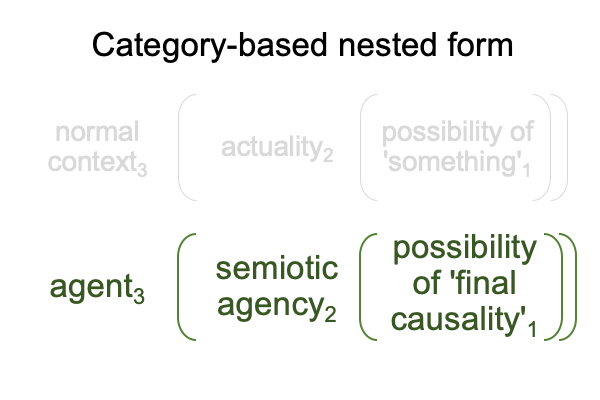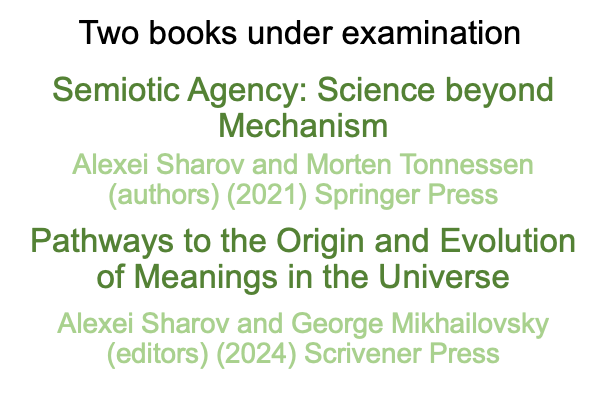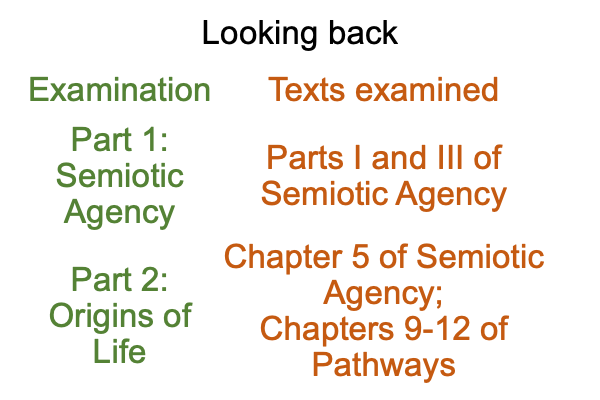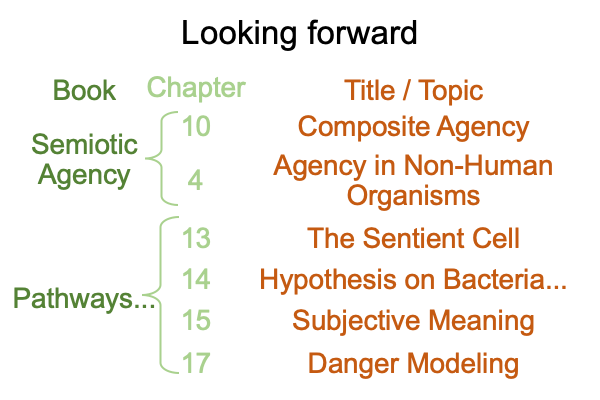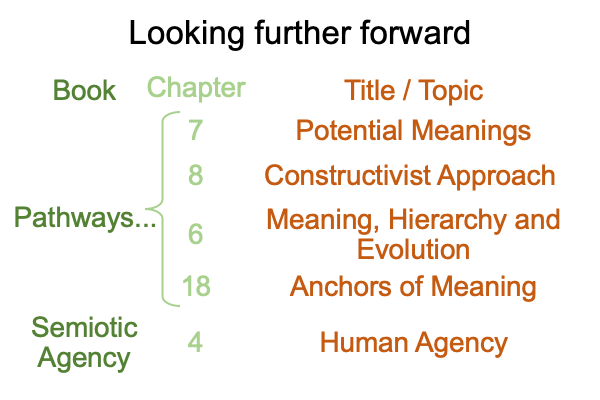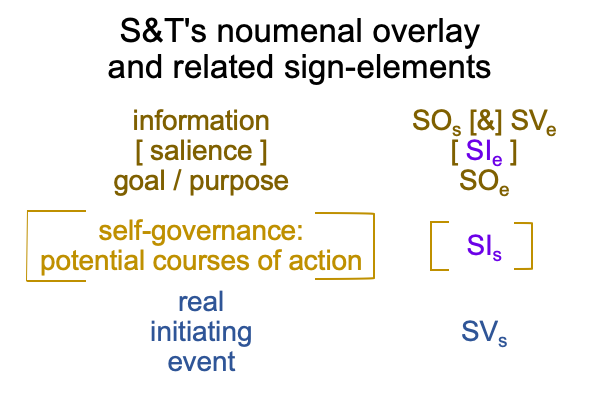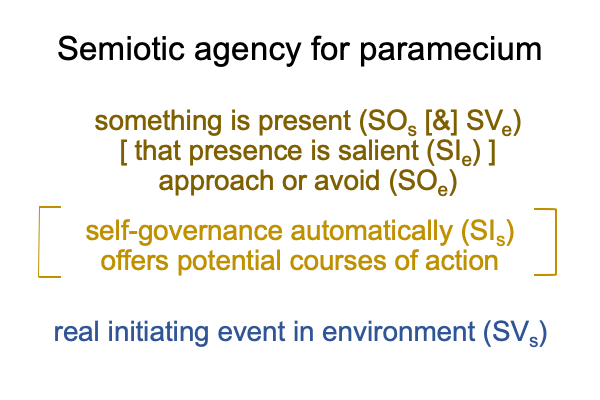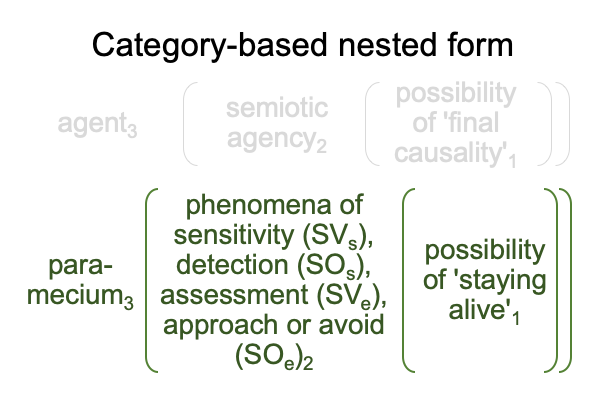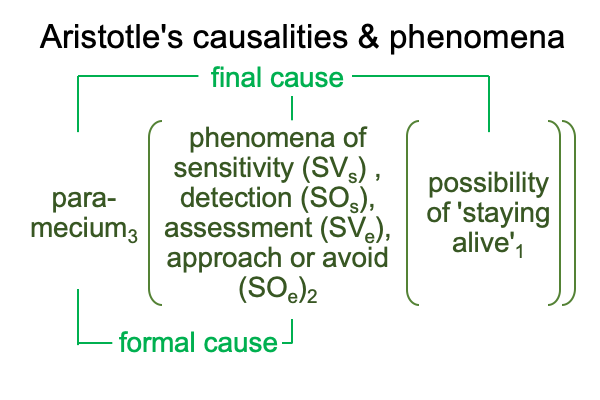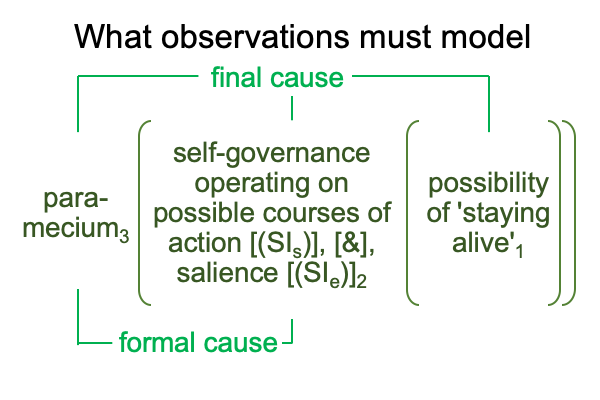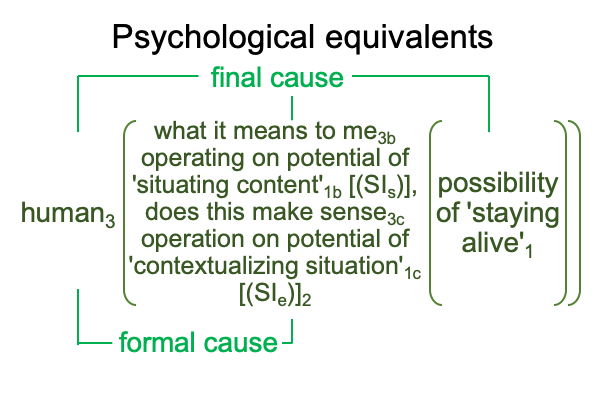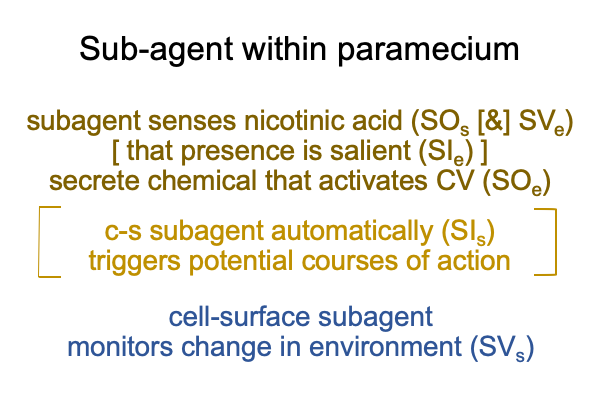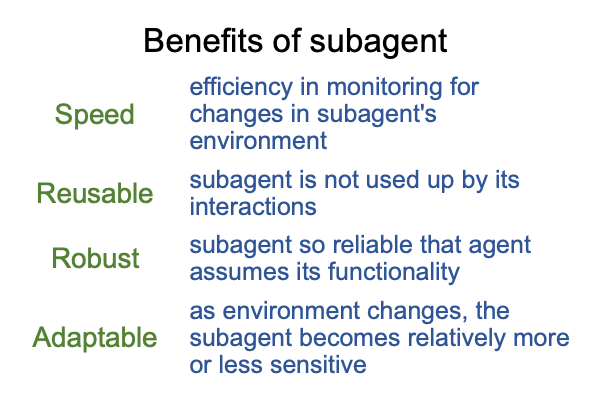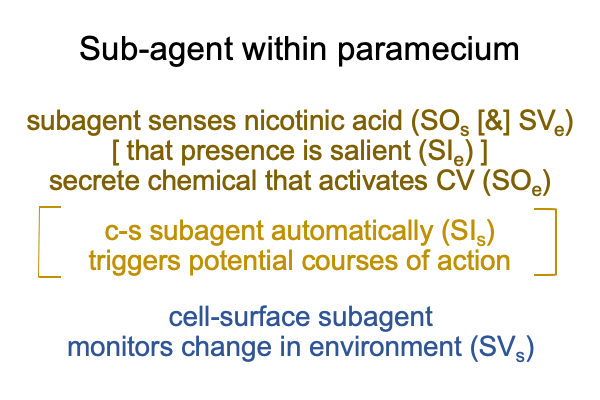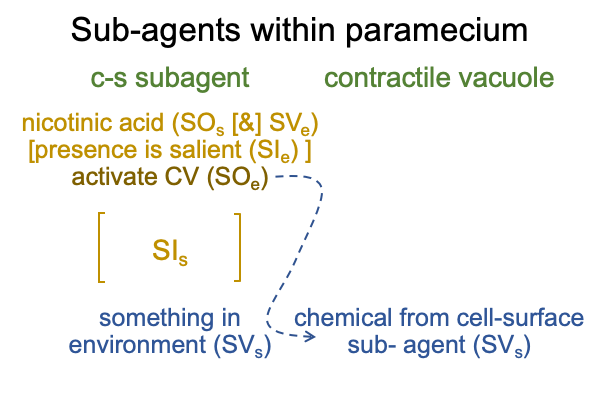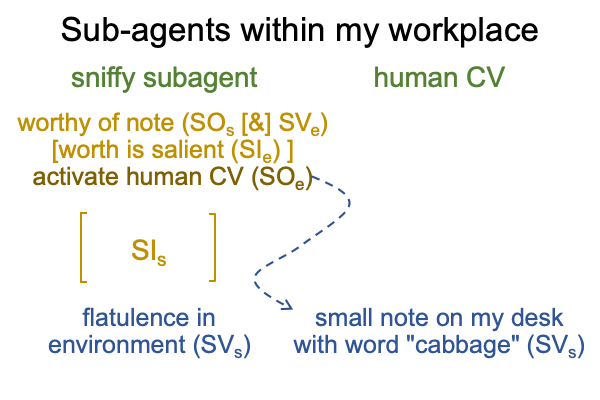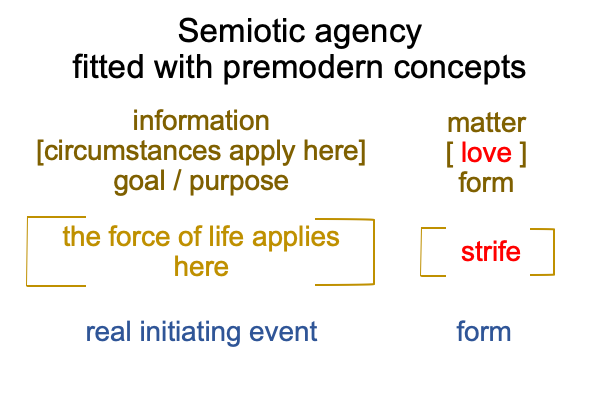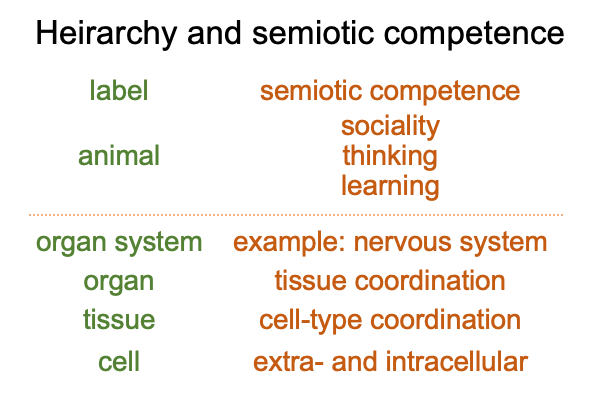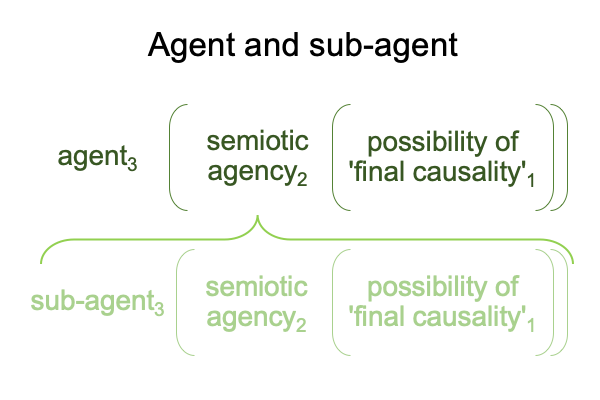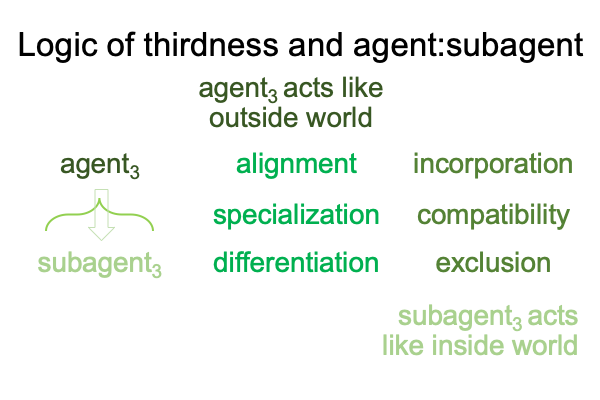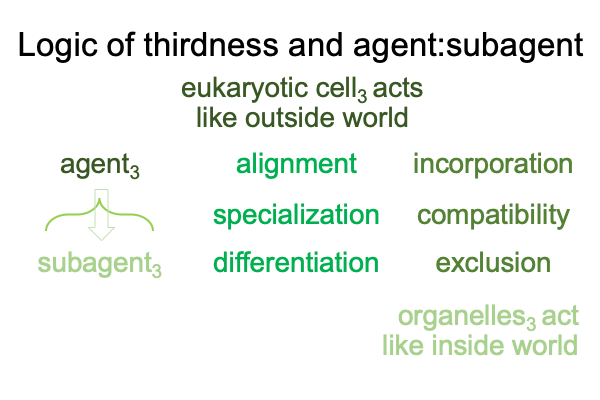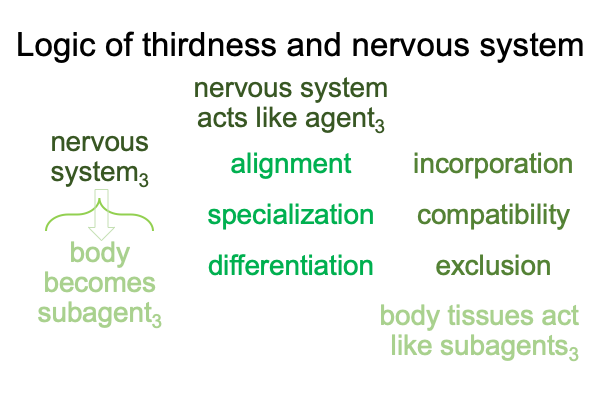Looking at Abir Igamberdiev’s Chapter (2024) “Evolutionary Growth of Meanings…” (Part 4 of 4)
0460 Section 12.3 covers meaningful information in autopoetic systems.
“Auto” means “self”. “Poetic” means “powered”.
0461 To start, the universe is full of spontaneous processes that may be modeled by truncated material and efficient causes. Entropy increases. Agency does not need to be present.
Autopoetic systems are not really self-powered. Instead, they entangle a spontaneous process (where entropy increases) in a triadic relation, so that, as movement towards thermodynamic equilibrium proceeds, some of the free energy is diverted to the maintenance and construction of an “autopoetic” being. This is the nature of emergence. Emergence associates to life.
0462 Igamberdiev notices that biological dynamics include both low-energy and high-energy processes separated by an epistemic cut. The epistemic cut becomes obvious when visualizing the way that formal and final causes envelope material and efficient causes. Formal and final causes associate to “low-energy”. Material and efficient causes go with “higher-energy”.
In the above figure. Low-energy describes the ontolon (in purple). Higher-energy describes the vortices (in green).
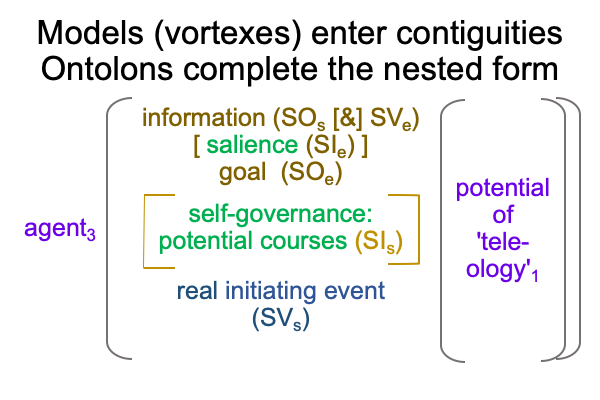
0463 Now, it seems that the low-energy and the high-energy dynamics must work in tandem. For example, models of self governance and potential courses of action and of salience should capture basic structural interactions between a living organism and its environment. Jacob von Uexkull (1864-1944 AD) coins the term, “Functionkreis”. Functionkreis may be regarded as systems of reflexive loops (vortexes) generating a network of biological codes(ontolons).
0464 Codes?
Yes, the concept of codes is already discussed in points 0409 through 0433.
0465 The high-energy, hard work of Functionkreis is investigated in biological laboratories throughout the world. What are the truncated material and efficient causalities that go into… say… whether a mitochondria is operating properly or malfunctioning? Laboratory scientists aim for mechanistic answers, but the terminology that frames their research questions betray the biosemiotic reality that they cannot allow to infect their methodologies.
The low-energy, epistemologically relevant work of codes is investigated by biosemiotics, as shown in the following figure.
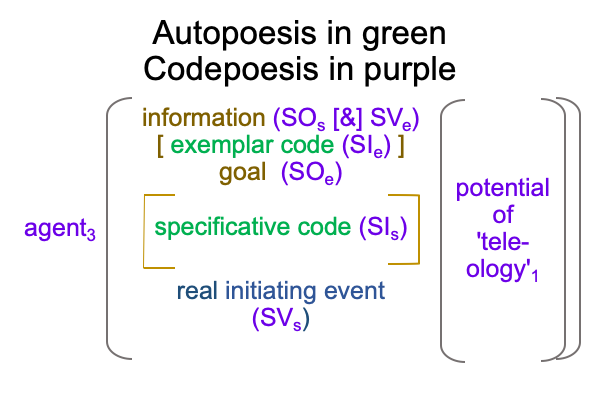
0466 In section 12.4, Igamberdiev introduces the term, “codepoesis”.
Codepoesis contrasts with autopoesis.
“Codepoesis” labels an intrinsic property of biological entities, where the holistic living system maps out onto a finite set of constituent… um… semiotic agents. Yes, the organism maps (through codepoesis) onto its organs and systems as semiotic agents. Then, organs and systems as semiotic agents map onto tissues and anatomical arrangements.
0467 The list continues downwards towards physical poesis.
Upwards, the list ends with a holistic terminus that exhibits the rewards of codepoesis, but itself is not so bound by a superior level of code. In autopoesis, the “soul” is the kinetic perfection (substitute the word, “completion”, for “perfection”) of the body and the body is the holistic terminus of codepoesis. The levels of codepoesis may also be called “subagencies”.
0468 In section 12.5, Igamberdiev adds one more level of poesis. The autopoesis of the individual human occurs within a super-organism that has its own autonomy.
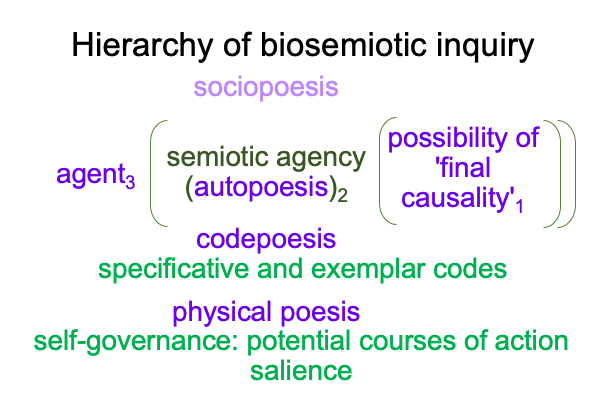
0469 Here, at the end of Part II of Pathways to the Origin and Evolution of Meanings in the Universe (2024, edited by Alexei Sharov and George E. Mikhailovsky, pages 187-278), the value of the category-based nested form comes to the fore as a style of semiotic inquiry within the category of sociopoesis.
Igamberdiev lays out a hierarchy as well as a frame for that hierarchy.
Sharov and Tonnessen’s semiotic agency captures what is common in all biological processes.
Sharov and Tonnessen propose their noumenal overlay within the hierarchy of sociopoesis.
So, Abir Igamberdiev seems to get the last word.
0470 This concludes my examination of Part II of Pathways, containing chapters nine through twelve titled and “Meanings in the Evolution of Life”. My thanks to each author and the editors for publishing these challenging essays.

